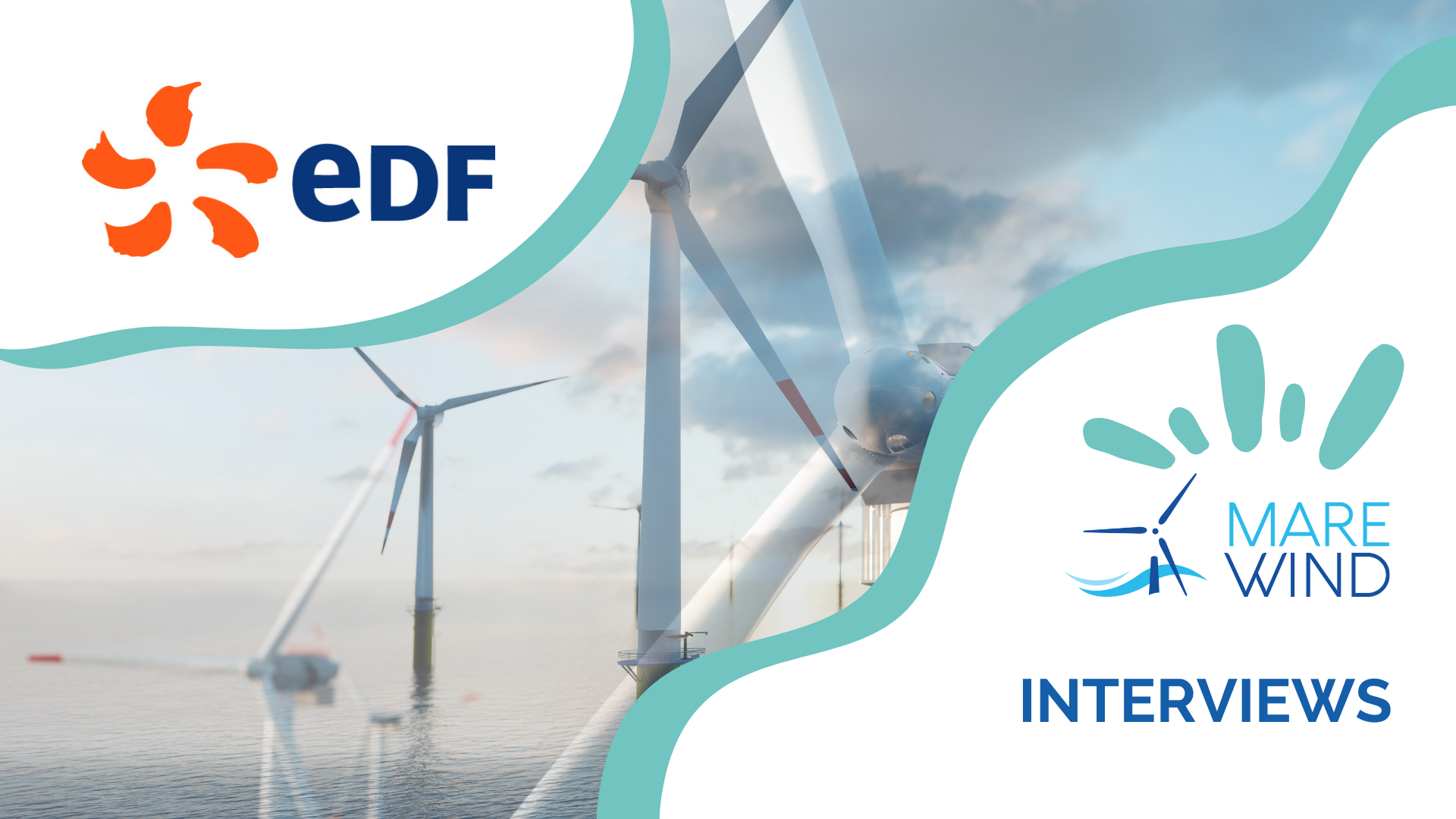EDF, key player in the renewable energy sector
01 July 2024
What motivated you to join the project, and what is your role?
EDF is an emerging player in the renewable energy sector and an international actor in energy production. Our R&D team supports the production teams with the aim of continues improvement and staying at the forefront of our field, ensuring our contribution to numerous European projects.
Within the MAREWIND project, EDF is contributing in the cost evaluation of the developed technologies where we can apply our internal cost models and validate it in our facilities. Additionally, we are supporting in the testing of corrosion and anti-fouling coatings as well as the definition of the life cost analysis.
But that’s not all; as experts in wind energy, we are also assisting in the definition of the innovations and the simulation of the 13 meters blade produced by EireComposites.
As world leading electricity company covering all electricity-based activities, how is EDF actively contributing to achieving the European renewable energy targets?
As a major player in the world’s energy transition, EDF is actively contributing to achieving European renewable targets. By 2030, our goal is to reach 60 GW net by increasing by more than 70% the share of renewable energy alongside nuclear energy.
Focusing on wind energy, our company pays a pivotal role in global onshore wind power production, emphasising high-quality projects and advanced technologies. Moreover, EDF participates in developing major offshore wind projects across Europe, Asia, and North America, supporting the growth of this sector and creating new jobs.
Thus, EDF has aligned its ambitions with the Paris Agreement setting greenhouse gas reduction targets by 2030. In this context, the company aims to reduce its carbon intensity and contribute to carbon neutrality by 2050.
In summary, EDF is committed to diversifying its energy sources, investing in renewables, and progressing toward a sustainable and cleaner energy future.
The technologies developed by the MAREWIND project will undergo testing at various demonstration sites. Could you elaborate on the specific test planned for implementation at your offshore wind farms?
The three frames embedding coupons with anticorrosion and antifouling coatings, made by Lurederra, have been installed at our wind farm in Teesside. The frames were installed in different exposures: wet zone, atmospheric and intermediate conditions.
From now until the end of the project, we have scheduled at least two inspections to evaluate the effectiveness of the new coatings.
Furthermore, other anti-fouling coatings are being tested in the Mediterranean waters at the “Observatoire Océanologique de Banyuls-sur-Mer”.
How does EDF play a role in analysing the results obtained from corrosion, biofouling, UHPC, blades, recycling and SHM initiatives?
In most tasks, our role is supportive and advisory. We are pleased to provide reviews for intermediate and final documents, drawing on our extensive experience.
How do you see the future of the MAREWIND project?
Our vision for the MAREWIND project is that it will play a pivotal role in advancing various aspects of the offshore wind industry, particularly in areas such as O&M cost reduction though enhanced component durability and SHM systems; capital cost reduction with new coatings and new concrete material requiring less reinforcement; technologies enabling future lifetime extension; and sustainability.

